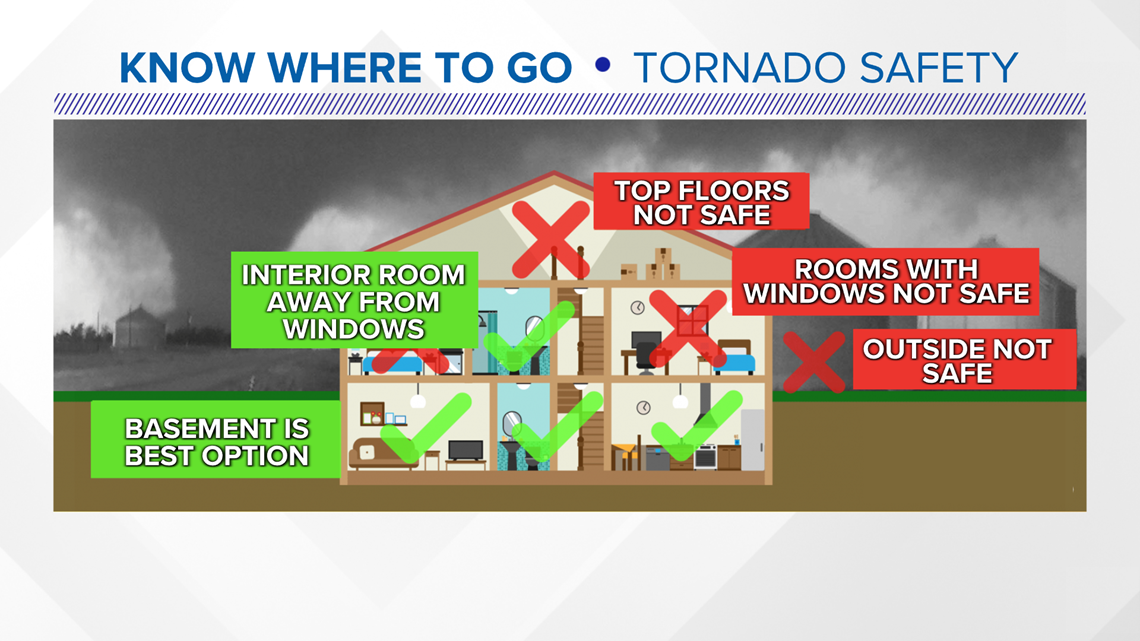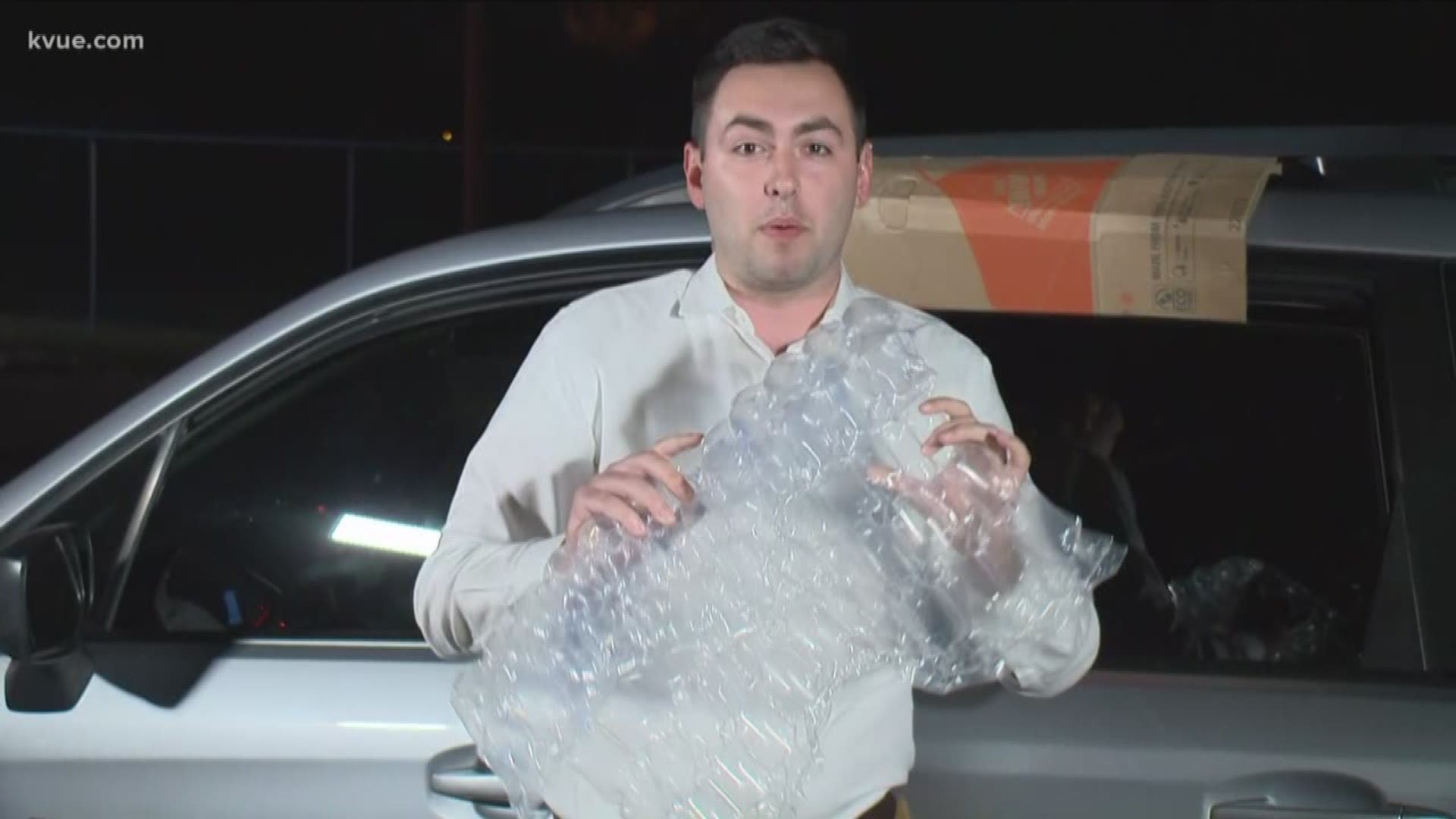AUSTIN, Texas — The severe weather season is upon us in Central Texas.
In the spring, Central Texas is more likely to see severe storms that lead to hail, tornadoes and heavy rains. In the summer and fall months, storms in the Gulf of Mexico can oftentimes pose a risk to Central Texas.
And that means danger for Texans in the storm's path.
Here are a few tips to help you prepare before the storm comes:
Hail tips
If storms are bringing hail potential, you'll want to take precautions to make sure your outdoor items are protected – especially your roof and cars.
Keep your cars parked under an awning or garage when possible. If not, experts suggesting tying paddings such as floor mats or blankets over your vehicle to protect it.
You might also want to check in with your insurance provider to see if your policy covers roof or vehicle damages due to hail.
RELATED:
Tornado tips
Perhaps the most dangerous threats during severe weather in the spring are caused by tornadoes.
To help you stay safe, make sure you have an emergency plan in place. That should include an emergency kit and identifying the safest place inside your home to take shelter, as well as knowing the routes to your closest weather shelter.


Here are a few more tips:
- Gather batteries and charging devices to power TVs, your internet and smart phones to ensure you can listen to emergency weather information
- Gather water, non-perishable food and medications for your emergency kit
- Gather a list of important information, including phone numbers
- Stay aware of weather conditions. These signs may indicate a tornado is approaching:
- A dark or green-colored sky
- A large, dark, low-lying cloud
- Large hail
- A loud roar that sounds like a freight train
- Know where to shelter. Low rooms without windows, such as basements, are a safe bet. Do not stay in a mobile home
- Protect your head with anything available. Get underneath something sturdy, such as a table
Avoiding lightning
As the saying goes, when the thunder roars, stay indoors! If you hear thunder during a storm, the safest thing to do is to go inside.
While the odds of being struck by lightning in any given year are less than one in a million, those chances are not zero. In fact, according to the CDC, Texas and Florida had the most lightning deaths in 2019.
To help protect yourself from lightning strikes:
Outdoors
- Postpone trips or outdoor activities when the forecast calls for thunderstorms
- Remember the 30-30 rule. After you see lightning, count to 30. If you hear thunder before you reach 30, go inside. Halt activities for at least 30 minutes after the last sound of thunder
- If no shelter is accessible, crouch down low with as little of your body touching the ground as possible
- Stay away from concrete floors or walls
Indoors
- Avoid water. Lightning can travel through plumbing
- Avoid electronic equipment of all types. Lightning can move through electrical systems and radio/TV reception systems
- Avoid corded phones. Cordless and cellular phones are safe
- Avoid concrete floors and walls
Flooding tips
Here's another saying for you: Turn around, don't drown.
In severe flooding, one of the biggest dangers is driving through heavy water flow. If you see rushing waters while driving, it's safer to turn around instead of driving through it. As little as six inches of water can cause you to lose control of your vehicle.
Here are a few other tips if you see a Flood Watch or Warning on the news:
- Gather emergency supplies, including food and water. Experts say to store at least one gallon of water per day for each person or pet. A three-day supply is advised
- Listen to the media for updates
- Have immunization records handy
- Bring in outdoor possessions, or tie them down securely
- If evacuations are advised, turn off your utilities at the main power switch as well as closing your main gas valve
- Avoid areas subject to flooding, such as low spots, canyons, creeks, rivers, etc.
Watch vs. Warning
During severe weather events, it's also important to understand the difference between a watch vs. a warning. One is more severe than the other!
Watch - Be Prepared!
A severe weather event, such as a tornado or flooding, is possible in or near the area. Review your emergency plans, check your supplies and have your safe room prepared.
Warning - Take Action!
The severe weather event has been sighted or indicated by radar. This means danger is imminent and you should move to a shelter or the lowest, interior room of a sturdy building.
Four Ps
And during storms, especially those that occur closer to the winter seasons, you'll often hear meteorologists reminding you to protect the four Ps: people, pets, plants and pipes:
- People: Make sure all your loved ones are accounted for and safe. Have friends or family in the path of a dangerous storm? Give them a call to make sure they're weather-aware
- Pets: Bring your pets indoors if possible. If not, make sure to prepare ahead of time to give them safe shelter ahead of the storm
- Plants: Bring your favorite plants inside. Hail, heavy rain and severe temperatures can be damaging
- Pipes: In the winter, sub-freezing temperatures can cause pipes to burst, leading to thousands in damages. Drip your faucets and open cabinets housing your pipes if possible

